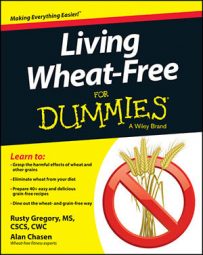An important turn in the history of wheat and mankind was wheat subsidies. During the Great Depression, the U.S. government offered subsidies to farmers to prevent them from going bankrupt. The government paid farmers to not grow crops, causing prices to remain elevated. Since then, agricultural subsidies have morphed into various forms, depending on the perceived needs of the grain growers.
These agricultural supports favor mass-produced grains that provide the majority of calories as recommended by governmental guidelines. Unfortunately, these supports don't extend to the organic farmers who grow healthier vegetables, which creates an unequal playing field for those trying to provide the best food possible.
Today, the top three subsidized crops in America are
Corn: Corn output consists mostly of high fructose corn syrup (HFCS), also known as corn sugar. HFCS was once touted as a healthy alternative to sugar, though it now has a much more negative reputation. Corn is also used for livestock feed, even though it's not a natural part of a cow's diet.
Wheat: Subsidies encourage high-yield dwarf wheat to maximize crops.
Soybeans: Most soybeans are used to make soybean oil. Of all the oil consumed in America, 65 percent is from soybeans.
It doesn't take a detective to notice that subsidies favor grains, sugars (through HFCS), and factory-raised (corn-fed) meats. Vegetables, fruits, and nuts are nowhere to be found. Why would farmers plant vegetables and fruits when they know they can get higher subsidies for growing wheat or corn?
However, the consequences of consuming greater amounts of corn, wheat, and soybeans (in the form of partially hydrogenated oil) can't be ignored.
High fructose corn syrup increases inflammation and blood glucose levels, leading to weight gain and diabetes. Corn-fed livestock is more susceptible to diseases that require antibiotics. The cows’ poor nutrition also leads to lower levels of healthy omega-3 fatty acids in the meat.
Wheat causes blood glucose levels to rise, and inflammation follows. Additionally, the popular high-yield dwarf wheat that boosts yields actually minimizes the wheat's nutrition.
Soybean oil contains high levels of omega-6 fatty acids, which leads to inflammation.
The mass production of these subsidized crops and their use in processed foods lead to cheaper items on grocery shelves and at fast-food restaurants.
So why would a consumer choose grass-fed beef and broccoli when the far cheaper alternative is a combo meal of meat from malnourished cows on a bun made from dwarf wheat with a side of potatoes fried in omega-6-laden oil and a soda containing 100 percent high fructose corn syrup?
Sadly, the real answer is that many Americans don't have a choice financially, and subsidies don't favor healthy eating.

